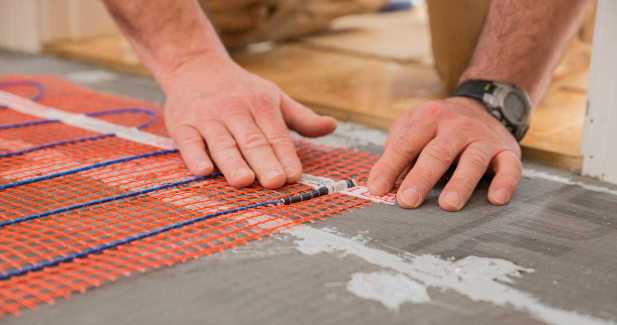Have you ever wondered why some radiant floor heating installations succeed while others seem to fall short? Well, it all comes down to the little details. In this article, we’ll take a deep dive into the common mistakes people make when installing radiant floor heating and how to avoid them.
If you stay ready, you never have to get ready, and if you know what mistakes to avoid, you won’t fall into the same pitfalls that others have fallen into!
Why is Proper Radiant Floor Heating Installation So Important?
Radiant floor heating systems are an incredible innovation that offers unmatched comfort and efficiency – but only when it’s installed correctly. As an installer or dealer, you already know that the precision and attention to detail required to install radiant floor heating solutions is no joke.
A well-executed installation ensures optimal performance, energy efficiency, and system longevity. It’s much more than laying pipes or cables in the right order. You have to understand the mechanics of heat distribution and the specifics of the installation site to achieve a perfect installation.
If the radiant floor heating system isn’t installed properly, it can lead to numerous problems, including uneven heating, system failures, and unnecessary wear and tear. These issues not only detract from the system’s efficiency but can also become expensive headaches for homeowners.
8 Mistakes You Should Avoid While Installing Radiant Floor Heating
When it comes to radiant floor heating installation, knowledge and experience are your biggest allies. Being aware of common mistakes can prevent potential issues down the line, which could mean the difference between a job well done and a missed opportunity. So, here are ten common mistakes you should avoid while installing radiant floor heating.
1. Pay Attention to the Order of Installation
One of the first mistakes some people make is not following the correct order of installation. It’s essential to lay down the insulation before installing the heating element to prevent downward heat loss. This step ensures all that warmth is directed upwards into the room in order to maximize the system’s efficiency.
Once you have the insulation down, lay the mat and membrane material. This is what holds the radiant heating system in place. Then, it’s time to lay your cables. Once the cables are down, you can move on to the flooring.
2. Not Preparing the Ground
Adequate ground preparation is non-negotiable. So, when you install a radiant floor heating system, make sure the substrate is clean, dry, and level before installing. Any moisture can lead to damage over time, while uneven surfaces can cause hot and cold spots across the floor. Taking the time to prepare the ground properly will set the stage for a successful installation.
3. Forgetting to Pressure Test
Pressure testing the pipes before you install the flooring is crucial for water-based systems because it ensures there are no leaks. Although Warmup focuses on electrical heating solutions, where pressure testing isn’t applicable, the principle of testing the system before finalizing the installation applies in order to ensure that the system is operational before you install the flooring.
4. Incorrect Connections
For electrical heating systems, the focus shifts to ensuring that electrical connections are made correctly and safely. The proper connection ensures the system’s reliability and safety, which is fundamental for the installer and homeowner’s peace of mind.
For water-based heating systems, incorrect pipe connections can lead to leaks and system inefficiency. No matter which system you’re using, make sure you pay special attention to your connections.
5. The Wrong Flooring
Not all flooring materials are suitable for radiant floor heating. High thermal conductivity is key for efficient heat transfer. So, before you start the installation, make sure the flooring material the homeowners want is compatible with radiant heating to ensure the system’s efficiency and effectiveness.
6. Document the Layout
Failing to document the layout of the heating elements can lead to problems down the line, especially during renovations or repairs. As a best practice, you should keep detailed records of the system’s layout to avoid accidentally damaging the heating elements in the future.
7. Lacking Expansion Joints
Expansion joints are crucial in water-based heating systems to accommodate thermal expansion and prevent damage. While this doesn’t apply to Warmup’s electrical systems, understanding the principle is important for comprehensive knowledge in radiant heating installations.
8. Securing the Pipes
In water-based systems, securing the pipes properly prevents noise from thermal expansion and contraction. For Warmup electrical systems, ensuring the heating elements are securely fixed and laid out without any sharp bends or stress points is equally important to prevent damage and ensure efficient operation.
Get the Highest Quality Radiant Floor Heating from Warmup
Choosing Warmup for your radiant floor heating projects means opting for quality, reliability, and unparalleled support. Our products are designed with installers in mind, to help ensure ease of installation without compromising performance.




![Thumbnail [200x250]](/wp-content/uploads/Indoor-Systems-Page-Image.png)
![Thumbnail [200x250]](/wp-content/uploads/image-13.png)
![Thumbnail [200x250]](/wp-content/uploads/Projects-Image.png)